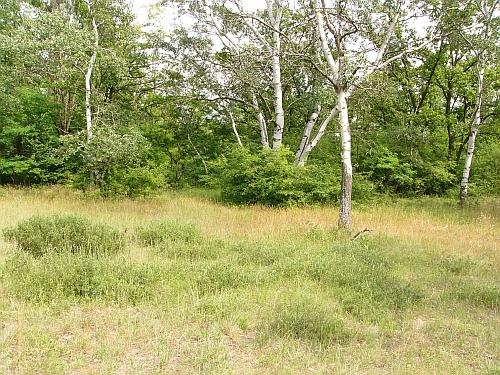Steppe woodlands on the Great Plain
The steppe woods zone, with its unique transitional climate and flora stretches 8000 km long across Eurasia and reaches its Western border in the Carpathian-Basin. Its main tree species West of the Urals is the Pedunculate Oak.
There are three basic types of steppe oak woods in Hungary; found on different soil types, thus their sets of species are different. There are both closed forests and open woods in a mosaic with grasslands. Most of the remaining steppe oak woods can be found on the Great Hungarian Plain, however there are populations on the Small Plain and on the Transdanubian Mezőföld. Due to their small extension many forests have their own name, usually after the name of the location they are adjacent with.
 Steppe oak woods and closed lowland steppe oak forests belong to the sand steppe woods. Steppe oak woods appear on dryer soils, and are replaced by the more closed, higher lowland steppe oak forests in areas with a better water supply. Protected steppe oak woods are the Csévharaszti Buckás wood, the Fényi wood at Bátorliget, or the Kakukkhegy wood next to Érd. Europe’s largest steppe oak woods are near Nagykőrös, joined to the North by smaller patches of closed lowland steppe oak forest. Steppe oak woods and closed lowland steppe oak forests belong to the sand steppe woods. Steppe oak woods appear on dryer soils, and are replaced by the more closed, higher lowland steppe oak forests in areas with a better water supply. Protected steppe oak woods are the Csévharaszti Buckás wood, the Fényi wood at Bátorliget, or the Kakukkhegy wood next to Érd. Europe’s largest steppe oak woods are near Nagykőrös, joined to the North by smaller patches of closed lowland steppe oak forest.
Open loess steppe oak woods occured both at the foothills and on the plains. Today some fragments are only present at the foothills, like the famous model area of botanical researches, the Kerecsend wood or the Hársas valley located next to Pánd.
Open salt steppe woods occurred mainly when closed forests dried out, so they are mainly found near old time riverbeds or oxbows. The most well known examples are the forests of Ohat and Újszentmargita.
|